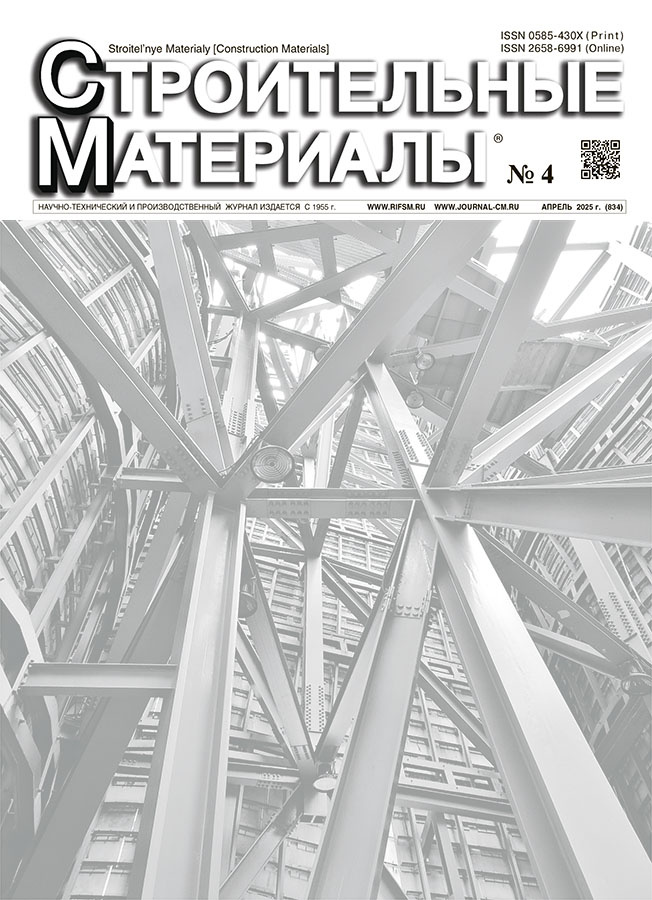Prospects of the Irkutsk Region hydro-removal ash usage as the main raw material for construction ceramics production
- Authors: Makarenko S.V.1, Gonzhitov A.B.1, Khozin V.G.2
-
Affiliations:
- Irkutsk National Research Technical University
- Kazan State University of Architecture and Engineering
- Issue: No 4 (2025)
- Pages: 45-51
- Section: Статьи
- URL: https://rjonco.com/0585-430X/article/view/682909
- DOI: https://doi.org/10.31659/0585-430X-2025-834-4-45-51
- ID: 682909
Cite item
Abstract
The article presents results of research on assessing the possibility of construction ceramics with hydro-removal ash (HRA) as the main raw material production. The main objects of the research were the HRA from TPP-10 and TPP-9, chosen because of the total ash accumulation volume, amounting to 48 thousand tons and proximity of the ash dumps to the existing ceramic Irkutsk brick production. The article presents physicochemical characteristics of the studied HRA, as well as structural and physicomechanical characteristics of the ceramic crock obtained from the HRA. Following methods were used: X-ray diffraction analysis, X-ray fluorescence analysis, TGA-thermogravimetric analysis, petrographic analysis, SEM-scanning electron microscopy, laser diffraction. During the research, including regression analysis method, the optimal conditions for construction ceramics from HRA obtaining were determined as well as the HTA optimal specific surface and the ceramic crock calcination mode and duration. The 100% HRA ceramic crock strength depends on the calcination mode and the HRAs specific surface area and may vary from 12 to 75 MPa. The main quality indicators for construction ceramics comply with GOST 530–2019 “Ceramic brick and stone. General specifications”. The obtained quality indicators values allow concluding that it is fundamentally possible to use the studied hydro-removal ashes as separate raw material for the construction ceramics production with semi-dry pressing method.
Full Text
About the authors
S. V. Makarenko
Irkutsk National Research Technical University
Author for correspondence.
Email: makarenko_83_07@mail.ru
Candidate of Sciences (Engineering), Docent
Russian Federation, 83, Lermontov St., Irkutsk, 664074A. B. Gonzhitov
Irkutsk National Research Technical University
Email: gonzhitow1999@yandex.ru
Graduate Student
Russian Federation, 83, Lermontov St., Irkutsk, 664074V. G. Khozin
Kazan State University of Architecture and Engineering
Email: khozin.vadim@yandex.ru
Doctor of Sciences (Engineering), Professor
Russian Federation, 1, Zelenaya Str., Kazan, 420043References
- Abdrakhimova E.S. Formation of light fraction ash and its use in the production of floor tiles. Ugol’. 2019. No. 11 (1124), pp. 64–66 (In Russian). EDN: EAPQLA. http://doi.org/10.18796/0041-5790-2019-11-64-66
- Abdrakhimov V.Z. Processes in bricks based on substandard clay and alumino-alkaline slag in the temperature range of 1000–1100оC. Izvestiya of Higher Educational Institutions. Сonstruction. 2023. No. 2, pp. 25–35. (In Russian). EDN: OOXEJT. http://doi.org/10.32683/0536-1052-2023-770-2-25-35
- Abdrakhimov V.Z. Influence of ash-slag and carbonate sludge on the physical-mechanical properties and phase composition of ceramic bricks. Izvestiya of Higher Educational Institutions. Сonstruction. 2023. No. 10, pp. 45–59. (In Russian). EDN: FHNNZU. http://doi.org/10.32683/0536-1052-2023-778-10-45-59
- Gur’eva V.A., Doroshin A.V. Application of ash-slag ceramics for low-rise construction. Stroitel’nye Materialy [Construction Materials]. 2022. No. 4, pp. 6–10. (In Russian). EDN: QMTBDJ. http://doi.org/10.31659/0585-430X-2022-801-4-6-10
- Buravchuk N.I., Guryanova O.V., Parinov I.A. Use of technogenic raw materials in ceramic technology. Open Ceramics. 2024. Vol. 18, 100578. http://doi.org/10.1016/j.oceram.2024.100578
- Huang Y.-M., Chen K.-S., Chen K.-S., Lai J.-W. Utilizing Industrial Sludge Ash in Brick Manufacturing and Quality Improvement. Materials. 2024. Vol. 17 (11), 2568. http://doi.org/10.3390/ma17112568
- Nurpeisova M., Nurlybaev R., Oryn Bekov Yu., Iskakov A. Investigation and use of ash-slag waste for the production of construction materials. Gornyi Zhurnal Kazakhstana [Mining magazine of Kazakhstan]. 2024. No. 3, pp. 35–40. https://doi.org/10.48498/minmag.2024.227.3.003
- Shakhov S.A. Model representations of the formation of structure and phase composition of ash-clay ceramics. Izvestiya of Higher Educational Institutions. Сonstruction. 2024. No. 5, pp. 69–76. (In Russian). EDN: OGWAPQ. http://doi.org/10.32683/0536-1052-2024-785-5-69-76
- Makarenko S.V., Vasiliev K.O., Khokhryakov O.V., Khozin V.G. The production of ash-based building ceramics based on ash and slag waste from thermal power plants of the Irkutsk region as an example of the best available technology for their disposal. Izvestiya of the KSACU. 2020. No. 4 (54), pp. 54–61. (In Russian).
- Makarenko S.V., Gonzhitov A.B., Khokhryakov O.V., Khozin V.G. Assessment of the influence of technological factors on the properties of building ceramics based on ash and slag mixtures at the thermal power plant of «Irkutskenergo». Izvestiya of the KSACU. 2023. No. 4 (66), pp. 233–240. (In Russian). EDN: NGAEYB. https://doi.org/10.52409/20731523_2023_4_233
- Pichugin E.A. Analytical review of the experience accumulated in the Russian Federation in involving ash-slag waste from thermal power plants in economic turnover. Problemy Regional`noj Ekologii. 2019. No. 4, pp. 77–87. (In Russian). EDN: MNEMSX. http://doi.org/10.24411/1728-323X-2019-14077
- Buravchuk N.I., Gur’yanova O.V. Use of technogenic raw materials in the technology of ceramic bricks. Innovatika i Ekspertiza: Nauchnye Trudy. 2020. No. 2 (30), pp. 160–169. (In Russian). EDN: AHHZCK. http://doi.org/10.35264/1996-2274-2020-2-160-169
- Ushnitskaya N.N., Mestnikov A.E. Investigation of the properties of clay raw materials by methods of physico-chemical analysis. Vestnik BGTU im. V.G. Shukhova. 2024. No. 4, pp. 16–25. (In Russian). EDN: XDPOAE. http://doi.org/10.34031/2071-7318-2024-9-4-16-25
- Kusiorowski R., Gerle A., Dudek K., Zviązek K. Application of hard coal combustion residuals in the production of ceramic building materials. Construction and Building Materials. 2021. Vol. 304, 124506. http://doi.org/10.1016/j.conbuildmat.2021.124506
- Stolboushkin A.Yu., Isterin E.V., Fomina O.A. Use of thermal power plant waste to reduce the average density of wall ceramic materials with a matrix structure. Stroitel’nye Materialy [Construction Materials]. 2024. No. 4, pp. 13–19. (In Russian). EDN: TPRBIP. http://doi.org/10.31659/0585-430X-2024-823-4-13-19
- Dacuba J., Sifrian E., Romero M., Llano T., Andres A. Influence of unburned carbon on environmental-technical behaviour of coal fly Ash fired clay bricks. Applied Sciences. 2022. Vol. 12 (8), 3765. https://doi.org/10.3390/app12083765
Supplementary files



















